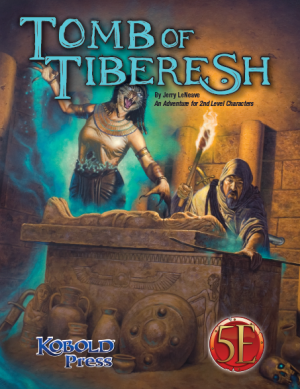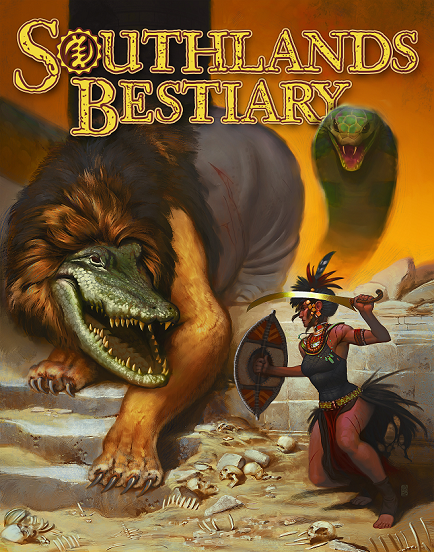![MonsterMondays]() The features of this humanoid-headed bird are those of your deceased brother-in-arms.
The features of this humanoid-headed bird are those of your deceased brother-in-arms.
According to the Coffin Texts of Nuria-Natal, the Ba is the ensemble that makes an individual unique and is one of the five aspects of the human soul with the Ren, the Ka, the Sheut, and the Ib. The Nurians believe that the Ba of a person still lives after the individual dies and that it can manifest as an incorporeal human-headed bird that leaves the tomb to reunite with the Ka in the afterlife. However, individuals who thinks that their earthly missions aren’t completed yet sometimes transcende this condition and turn into a corporeal manifestation of their former personality known as the ba-bird, a native outsider that possesses the head of the deceased person but the body of a bird of prey of a stature that matches the person’s size. The Coffin Texts also mentioned that this peculiar occurrence eats, drinks, and can even reproduce.
Ba-Bird CR 6
XP 2,400
CG Medium Outsider Rogue 4 (former human, native)
Init +3; Senses darkvision 60 ft.; Perception +18
Defense
AC 19, touch 17, flat-footed 15 (+3 Dex, +3 deflection, +1 dodge, +2 natural)
hp 37 (4d10+12)
Fort +4, Ref +7, Will +4 (+4 racial bonus against poison)
Defensive Abilities evasion, trapfinding, trap sense +1, uncanny dodge
DR 5/magic; Immune disease; Resist acid 10, cold 10, electricity 10; SR 17
Offense
Speed 30 ft.; fly 60 ft. (good)
Melee 2 talon +6 (1d4)
Special Attacks sneak attack 2d6
Statistics
Str 11, Dex 17, Con 16, Int 15, Wis 17, Cha 17
Base Atk +3; CMB +3; CMD 16
Feats Dodge, Weapon Finesse
Skills Acrobatics +3, Appraise +9, Bluff +9, Diplomacy +3, Disable Device +10, Escape Artist +10, Fly +7, Intimidate +3, Knowledge (dungeoneering) +9, Knowledge (local) +9, Knowledge (planes) +10, Knowledge (religion) +10, Linguistics +9, Perception +18, Sense Motive +18, Stealth +10
Languages Auran, Common, Draconic, Dwarven, Elven, Gnoll, Southern
SQ rogue talents (bleeding attack, fast stealth)
Ecology
Environment any (warm desert, hills and mountains)
Organization solitary
Treasure standard
Creating a Ba-Bird
“Ba-bird” is an acquired template that can be added to any living corporeal creature (referred to hereafter as the base creature). A ba-bird retains all the base creature’s statistics and special abilities except as noted here.
CR: Same as the base creature + 2.
Alignment: Any.
Type: The creature’s type changes to outsider (native). Do not recalculate BAB, saves, or skill ranks.
Senses: A ba-bird gains darkvision 60 ft. If the creature already had darkvision, it gains darkvision 120 ft. instead.
Armor Class: A ba-bird has a +2 natural armor bonus or the base creature’s natural armor bonus, whichever is better. A ba-bird also gains a deflection bonus equal to its Charisma bonus. A ba-bird is proficient only with light armor but cannot use shields.
Hit Dice: Change all of the creature’s racial Hit Dice to d10s. All Hit Dice derived from class levels remain unchanged. As corporeal native outsiders, ba-birds use their Constitution modifiers to determine bonus hit points.
Speed: Unless the base creature flies better, the ba-bird flies at twice the base creature’s land speed (good maneuverability).
Defensive Abilities: A ba-bird gains immunity to disease; +4 racial bonus on saves vs. poison; acid, cold, and electricity resist 10; DR 5/magic (if HD 11 or less) or 10/magic (if HD 12 or more); and SR equal to CR + 11 (maximum 35).
Melee Attack: A ba-bird has two talon attacks that it can use once per round as natural weapons. A ba-bird always fights solely with its natural weapons.
Damage: A ba-bird’s talon attack deals damage according to its size.
Abilities: Wis +2, Cha +2.
Skills: Ba-birds have a +8 racial bonus on Knowledge (planes), Knowledge (religion), Perception, and Sense Motive checks. A ba-bird always treats Diplomacy, Fly, Intimidate, Knowledge (planes), Knowledge (religion), Perception, and Sense Motive as class skills. Otherwise, skills are the same as the base creature.
Spells: A ba-bird that was a spellcaster in his previous existence gains Eschew Materials and Natural Spell as bonus feats even if it doesn’t meet the prerequisites.
(This post is Product Identity.)



 (For use in the Midgard World Setting – Pathfinder Rules)
(For use in the Midgard World Setting – Pathfinder Rules)














































 As soon as this yellow-bellied sea snake emerges from the river, it releases an ear-splitting yell.
As soon as this yellow-bellied sea snake emerges from the river, it releases an ear-splitting yell.
 In the cool streets and blazing bazaars, the word is out: a great treasure has gone missing in the Everlasting City of the Cat, and some very ambitious people have set their sights on it. Many paws and claws are out, and everyone is sniffing around for something rich and strange.
In the cool streets and blazing bazaars, the word is out: a great treasure has gone missing in the Everlasting City of the Cat, and some very ambitious people have set their sights on it. Many paws and claws are out, and everyone is sniffing around for something rich and strange.







 Like many that hail from the desert city-states, you learned to read the language of the Lotus and Tamasheq Trails before you could even read the simplest Nurian scroll. Before you knew how to lace your own sandals, you knew the flicker of a camel’s ear that told of approaching riders and which of the desert falcon’s cries warned of impending sandstorms and which meant water or game was nearby. To this day, you can spot gnoll sign, sense a sinkhole, or smell a Kushite ambush even before the pack animals do.
Like many that hail from the desert city-states, you learned to read the language of the Lotus and Tamasheq Trails before you could even read the simplest Nurian scroll. Before you knew how to lace your own sandals, you knew the flicker of a camel’s ear that told of approaching riders and which of the desert falcon’s cries warned of impending sandstorms and which meant water or game was nearby. To this day, you can spot gnoll sign, sense a sinkhole, or smell a Kushite ambush even before the pack animals do.
 Ghatazi: a word synonymous with misery in every spoken language of the Southlands.
Ghatazi: a word synonymous with misery in every spoken language of the Southlands.
